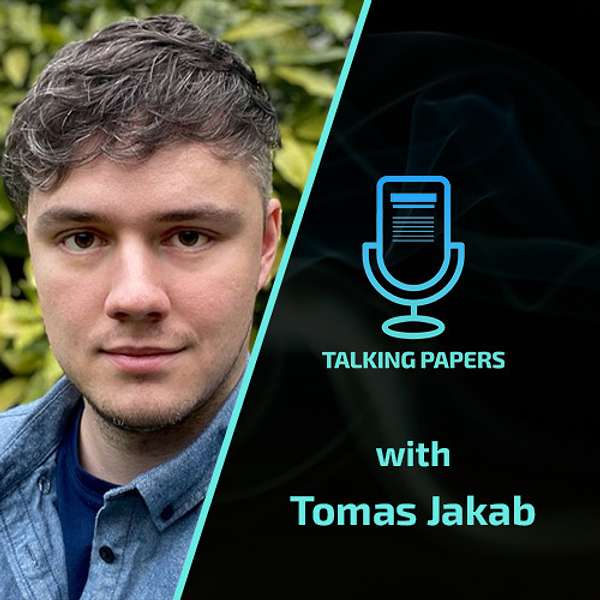
Talking Papers Podcast
🎙️ Welcome to the Talking Papers Podcast: Where Research Meets Conversation 🌟
Are you ready to explore the fascinating world of cutting-edge research in computer vision, machine learning, artificial intelligence, graphics, and beyond? Join us on this podcast by researchers, for researchers, as we venture into the heart of groundbreaking academic papers.
At Talking Papers, we've reimagined the way research is shared. In each episode, we engage in insightful discussions with the main authors of academic papers, offering you a unique opportunity to dive deep into the minds behind the innovation.
📚 Structure That Resembles a Paper 📝
Just like a well-structured research paper, each episode takes you on a journey through the academic landscape. We provide a concise TL;DR (abstract) to set the stage, followed by a thorough exploration of related work, approach, results, conclusions, and a peek into future work.
🔍 Peer Review Unveiled: "What Did Reviewer 2 Say?" 📢
But that's not all! We bring you an exclusive bonus section where authors candidly share their experiences in the peer review process. Discover the insights, challenges, and triumphs behind the scenes of academic publishing.
🚀 Join the Conversation 💬
Whether you're a seasoned researcher or an enthusiast eager to explore the frontiers of knowledge, Talking Papers Podcast is your gateway to in-depth, engaging discussions with the experts shaping the future of technology and science.
🎧 Tune In and Stay Informed 🌐
Don't miss out on the latest in research and innovation.
Subscribe and stay tuned for our enlightening episodes. Welcome to the future of research dissemination – welcome to Talking Papers Podcast!
Enjoy the journey! 🌠
#TalkingPapersPodcast #ResearchDissemination #AcademicInsights
Talking Papers Podcast
MagicPony - Tomas Jakab
Welcome to another exciting episode of the Talking Papers Podcast! In this installment, I had the pleasure of hosting Tomas Jakab to discuss his paper "MagicPony: Learning Articulated 3D Animals in the Wild" which was published at CVPR 2023.
The motivation behind the MagicPony methodology stems from the challenge posed by the scarcity of labeled data, particularly when dealing with real-world scenarios involving freely moving articulated 3D animals. In response, the authors propose an innovative solution that addresses this issue. This novel approach takes an ordinary RGB image as input and produces a sophisticated 3D model with detailed shape, texture, and lighting characteristics. The method's uniqueness lies in its ability to learn from diverse images captured in natural settings, effectively deciphering the inherent differences between them. This enables the system to establish a foundational average shape while accounting for specific deformations that vary from instance to instance. To achieve this, the researchers blend the strengths of two techniques, radiance fields and meshes, which together contribute to the comprehensive representation of the object's attributes. Additionally, the method employs a strategic viewpoint sampling technique to enhance computational speed. While the current results may not be suitable for practical applications just yet, this endeavor constitutes a substantial advancement in the field, as demonstrated by the tangible improvements showcased both quantitatively and qualitatively.
AUTHORS
Shangzhe Wu*, Ruining Li*, Tomas Jakab*, Christian Rupprecht, Andrea Vedaldi
ABSTRACT
We consider the problem of learning a function that can estimate the 3D shape, articulation, viewpoint, texture, and lighting of an articulated animal like a horse, given a single test image. We present a new method, dubbed MagicPony, that learns this function purely from in-the-wild single-view images of the object category, with minimal assumptions about the topology of deformation. At its core is an implicit-explicit representation of articulated shape and appearance, combining the strengths of neural fields and meshes. In order to help the model understand an object's shape and pose, we distil the knowledge captured by an off-the-shelf self-supervised vision transformer and fuse it into the 3D model. To overcome common local optima in viewpoint estimation, we further introduce a new viewpoint sampling scheme that comes at no added training cost. Compared to prior works, we show significant quantitative and qualitative improvements on this challenging task. The model also demonstrates excellent generalisation in reconstructing abstract drawings and artefacts, despite the fact that it is only trained on real images.
RELATED PAPERS
📚CMR
📚Deep Marching Tetrahedra
📚DINO-ViT
LINKS AND RESOURCES
📚 Paper
💻 Project page
💻 Code
CONTACT
If you would like to be a guest, sponsor or just share your thoughts, feel free to reach out via email: talking.papers.podcast@gmail.com
All links are available in the blog post: https://www.itzikbs.com/magicpony
🎧Subscribe on your favourite podcast app: https://talking.papers.podcast.itzikbs.com
📧Subscribe to our mailing list: http://eepurl.com/hRznqb
🐦Follow us on Twitter: https://twitter.com/talking_papers
🎥YouTube Channel: https://bit.ly/3eQOgwP
